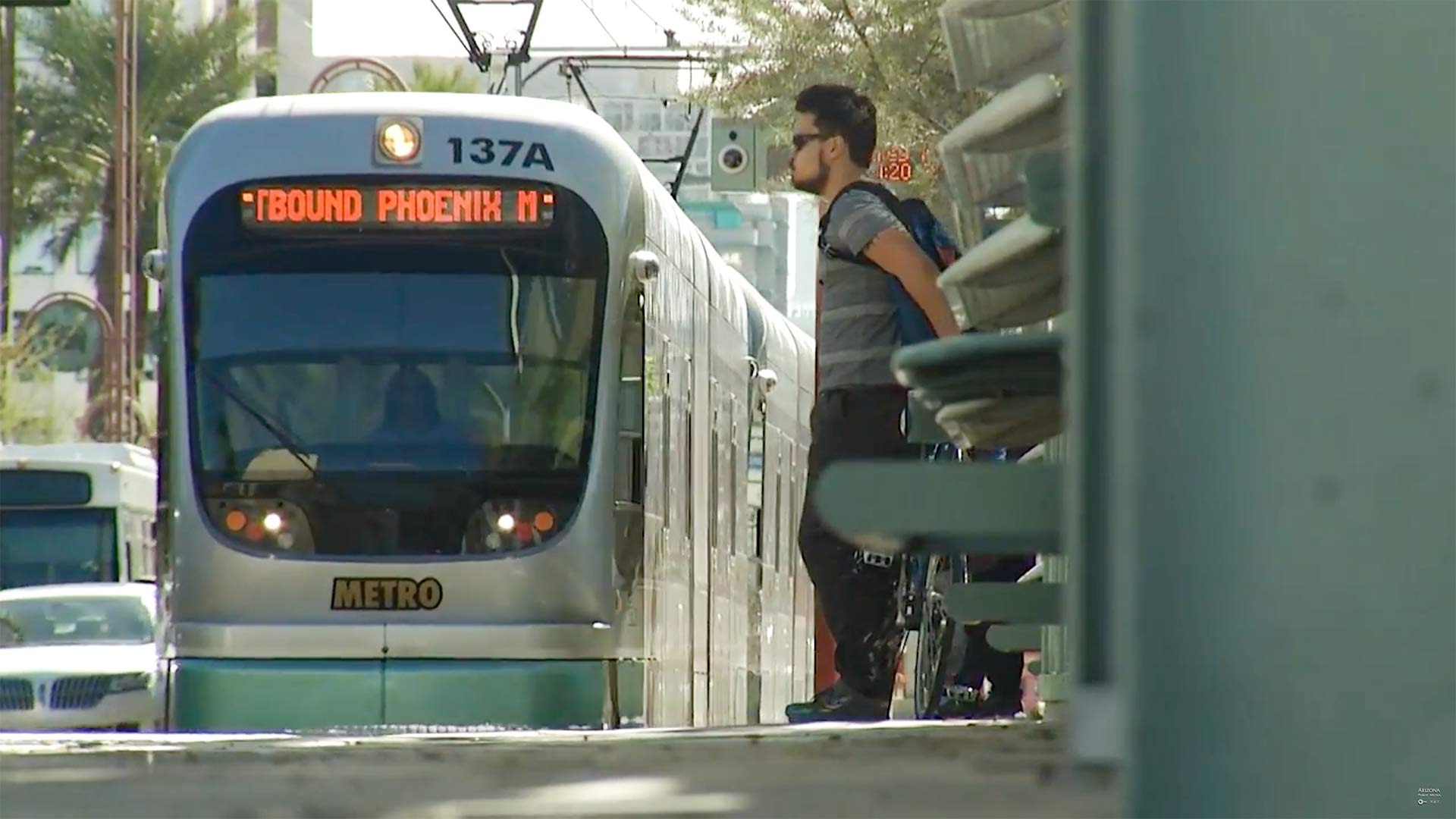 A light-rail stop in Phoenix.
A light-rail stop in Phoenix.
PHOENIX — Phoenix voters are weighing the future of mass rail transit in the nation's fifth largest city heading into the last day to cast ballots on a proposition asking whether any expansion of the light rail system should be permanently halted.
Early mail-in ballots have already pushed overall turnout for Tuesday's special election higher than one held four years ago at the height of the Phoenix summer, when many people go on vacation to escape triple-digit temperatures.
The City Clerk received around 165,025 completed ballots by Friday, said spokesman Matthew Hamada. That's about 30% of 549,128 early ballots sent to voters who requested them, and 21.5% of all the city's 764,653 registered voters.
Hamada also said 768 people cast ballots at the city's voting centers on Saturday, the first of three days of in-person voting. The centers were also open Monday and will open again on Tuesday.
Polls will close at 7 p.m. Tuesday and the first unofficial results are expected to be posted online around an hour later. The campaigns on both sides of the issue planned election night parties to watch the returns.
The turnout by Phoenix voters was 20.8% on Aug. 25, 2015, when they approved Proposition 104, which included a tax increase to pay for transportation projects over 35 years, including light rail. The final vote was nearly 55% for the increase and around 45% against.
Phoenix voters tend to vote early by mail, with between 88% and 97% of all ballots in the last three citywide elections cast by early ballot, the clerk's office says.
Proposition 105 was placed on this month's ballot after a signature-gathering drive by opponents of a planned 5.5-mile extension of the rail into south Phoenix. If it passes, the measure will stop that and any other expansion.
Now stretching more than 26.3 miles, construction of the Valley Metro light rail system began in March 2005 and service was launched in December 2008. The agency says the system served about 15.7 million riders in 2018, with an estimated weekday ridership of nearly 48,000.
The rail is used by high school and college students and working professionals, as well as disabled and elderly who cannot drive. Rail critics point out the rail system is also heavily used by homeless people.
A second measure, Proposition 106, aims to limit the city's spending until its pension debt is significantly reduced.
A group called Building a Better Phoenix organized the anti-rail initiative. Supporters include business owners along the planned south Phoenix extension route and City Council members Sal DiCiccio and Jim Waring.
Phoenix Mayor Kate Gallego and the other council members oppose the measure, saying the rail system would lose millions of dollars in federal funds that cannot be used for other purposes. The Greater Phoenix and Arizona Hispanic chambers of commerce, city firefighters, local unions and the AARP chapter also oppose Proposition 105.
Those groups also oppose Proposition 106, saying it could slash funding for libraries and other city services such as public swimming pools and community centers.

By submitting your comments, you hereby give AZPM the right to post your comments and potentially use them in any other form of media operated by this institution.